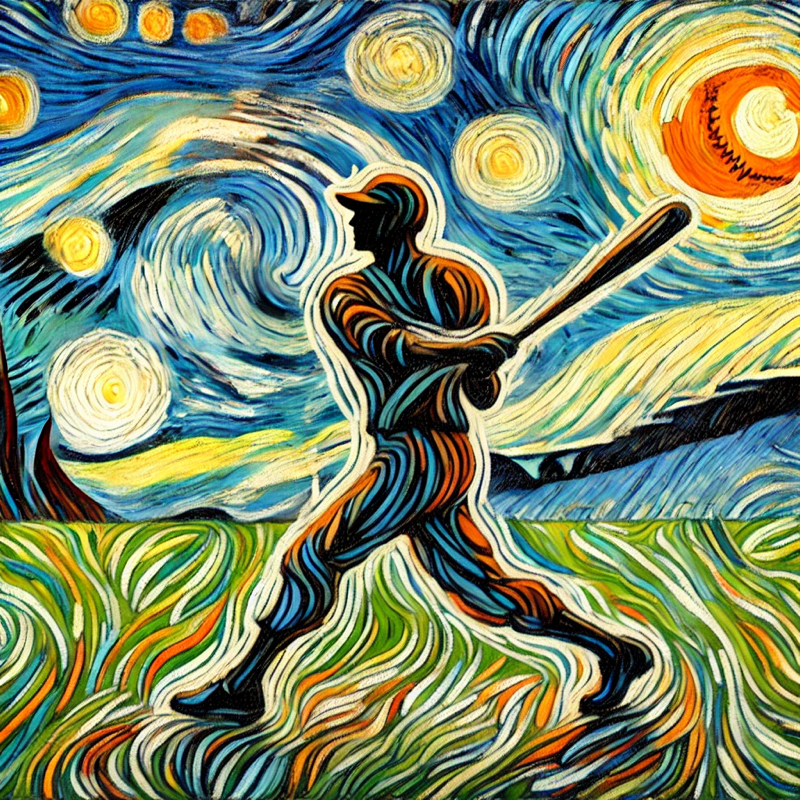Breaking Barriers: The Legacy of Dummy Hoy
Dummy Hoy, a deaf baseball legend, overcame societal barriers to redefine the game. Facing discrimination and exclusion, he pioneered hand signals in baseball, proving ability matters more than limitations. His journey inspires resilience, inclusion, and the power of perseverance.

Introduction
William Ellsworth "Dummy" Hoy was an extraordinary athlete who defied societal expectations and left an enduring mark on baseball. Born in 1862, Hoy lost his hearing as a child due to meningitis, a condition that would shape his entire life. In an era where disability was often met with exclusion, Hoy refused to be limited by the perceptions of others. Instead, he carved a path for himself in professional baseball, becoming one of the greatest deaf players the sport has ever seen.
Hoy’s story is not just one of athletic prowess but of resilience, innovation, and an unwavering commitment to breaking barriers. Throughout his life, he faced numerous obstacles, not only because of his hearing impairment but also due to the misconceptions surrounding his abilities. His journey is a testament to perseverance and an example of how individuals can challenge and ultimately change societal perceptions.
Challenges and Misconceptions
The world that Hoy grew up in viewed deafness as a significant disability, often associating it with incompetence. People with hearing impairments were frequently marginalized, denied opportunities, and placed in institutions rather than integrated into society. Deaf individuals were seen as incapable of excelling in professions that required communication, let alone in sports, which demanded constant coordination and verbal cues.
When Hoy entered baseball, he encountered skepticism and outright discrimination. Managers doubted his ability to perform at a high level, and some players mocked his inability to hear. The nickname "Dummy," which was common for deaf individuals at the time, reflected the widespread ignorance about deafness. Yet, Hoy embraced it and used it as a way to own his identity rather than let it define him negatively.
One of the greatest challenges Hoy faced was on the field itself. In baseball, communication is vital—players need to hear calls, warnings, and coaching instructions. Hoy had to develop alternative methods to stay competitive in the game. Opposing players often tried to take advantage of his hearing impairment, assuming that his inability to hear verbal commands would put him at a disadvantage. However, Hoy turned these perceived weaknesses into strengths, proving that adaptability could overcome traditional barriers.
How He Handled It
Hoy's ability to handle adversity was remarkable. Rather than allowing societal biases to limit him, he responded with innovation, discipline, and an unrelenting drive. Some key ways he managed the challenges he faced include:
- Mastering Visual Cues – Since Hoy couldn’t rely on verbal communication, he became exceptionally skilled at reading body language, facial expressions, and hand signals. He developed an acute sense of spatial awareness on the field, which allowed him to excel as an outfielder.
- Influencing the Use of Hand Signals in Baseball – One of Hoy’s most lasting contributions to baseball was the widespread adoption of hand signals. To accommodate Hoy and other deaf players, umpires and teammates began using hand gestures to indicate balls, strikes, and outs. This practice eventually became a standard part of the game, benefiting all players by improving clarity in communication.
- Proving Himself with Performance – Hoy didn’t just participate in baseball; he excelled in it. Over his 14-year career in Major League Baseball, he amassed over 2,000 hits, 596 stolen bases, and maintained a career batting average of .288. His skills on the field forced skeptics to acknowledge his talent, regardless of his hearing impairment.
- Resilience in the Face of Prejudice – Hoy endured discrimination both on and off the field, but he refused to let it define him. He remained professional and focused on his game, letting his performance speak louder than any words ever could.
Lessons We Can Learn
Hoy's life is filled with valuable lessons that extend beyond sports and into everyday life. Some of these include:
- Adversity Can Be a Catalyst for Change – Rather than succumbing to the limitations others imposed on him, Hoy used adversity as fuel to create meaningful change.
- Innovation Comes from Necessity – His need for non-verbal communication led to innovations that improved baseball for all players, demonstrating how challenges can lead to progress.
- True Strength Lies in Persistence – Hoy's unwavering determination proves that talent and hard work can overcome even deeply ingrained biases.
- Self-Acceptance is Powerful – By embracing his identity rather than hiding it, Hoy showed that self-confidence is key to overcoming social stigma.
- Actions Speak Louder Than Words – Hoy’s ability to let his performance do the talking serves as a reminder that excellence can dismantle even the most rigid prejudices.
Conclusion
Dummy Hoy’s legacy is one of triumph over adversity. In an era when disability was seen as a limitation, he refused to accept the narrow-minded views of society. Instead, he transformed the game of baseball, proving that greatness is not determined by one’s physical abilities but by one’s spirit and determination.
Hoy's story continues to inspire generations, not just in the realm of sports but in any field where people face obstacles. He reminds us that barriers are meant to be broken and that with resilience and ingenuity, anyone can defy expectations and leave a lasting impact.
